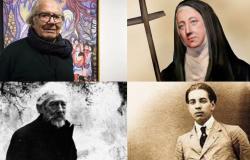
Architecture has always been oriented towards designing and constructing buildings and urban spaces that respond to the needs of human beings, that are functional and aesthetically pleasing.
This work includes several phases and requires integration with the environment, as well as a level of understanding of the human mind. Likewise, architecture has served over time as a reflection of society and has evolved with it. In Peru it was no different, since many of the architectural styles that we can see in various parts of the country respond to specific moments in history and they have remained a living reminder of her.
The brutalist architecturecurrent that came from Europeis also part of the visible face of our Peru, specifically when talking about Lima, and it is worth reviewing a little about its meaning and what it represented for the nation.
It is a architectural trend which emerged last century during the period after the Second World War, a critical moment since in Europe there was a great need related to housing. Thousands of people had been left homeless and what abounded were shattered buildings.
Faced with this, the viable solution was to build structures that were functional, but cheap and that could house a large number of families.
The name of this current comes from the use of the term ‘Brutalism’ by the British engineer Reyner Banhamwho was in charge of adapting the word of French origin béton brut, with which reinforced concrete is known, the main material used by this movement.
Brutalist style works They stand out for being colossal and show the concrete or concrete, and even part of the materials with which they have been built, whether bricks, glass, among others. They play with angular geometric shapes and are monochromatic.
All these elements are part of the finish and were very widespread last century, especially in countries with communist ideology.
In Peru This type of architectural style was not relegated, on the contrary, it is known that it was introduced by the School of engineers around the 1950s and 1960s.
In this way, the current that was modern at the time was reflected in buildings such as the San Felipe Residential either Santa Cruz. It could even be seen in the Civic Center or the Sheraton Hotel.
With the return of the country to a military regime after the coup d’état of General Velasco Alvaradobrutalism became the perfect way to demonstrate the power of the new management, as well as its ideals and values.
In this way, a process of large buildings that evoke authority and powersuch as government buildings and public companies that expressed nationalist ideology and sought to awaken pride among the population.
It is worth noting that many of the buildings of this style are still standing and can be seen in many parts of the city. The military government was in charge of building these emblematic spaces, for example, the headquarters of Petroperulocated in the district of San Isidrofor which public competitions were held and whose form sought to represent a oil well through a set of buildings with a large vertical volume, next to other horizontal ones.
In this way, national sovereignty over crude oil was realized; However, its dimensions were classified as disproportionate to the real needs and the use that would be given to it.
Another emblematic building of brutalist style was the Ministry of Fisheries, today Museum of the Nationin the district of San Borja. An exposed concrete colossus that was intended to resemble the anatomy of a cetacean through empty spaces, heights, volume and so on. It is worth mentioning that the fishery, especially anchovywas a fairly strong source of income at that time and they sought to exalt this activity.
One can also mention the Army Headquartersknown as The Pentagonitea structure that shares those colossal characteristics of the brutalist style and that gave the image of hierarchy and power.
Buildings such as that of the General Secretariat of the Andean Community of Nations, the Housing Bank of Peru, today the Ministry of Women or that of the Central Reserve Bank of Peru in the Center of Lima.
It is also important to highlight projects such as the expansion of Senati, the Navy Naval School or the Miraflores Credit Bank, which is located in the heart of the district and within sight and patience of visitors.
The truth is that this current remained in force for some time, but as the military governments lost strength, its use was seen to a lesser and lesser extent. Despite this and the passing of the years, in each of these constructions you can see the mark of a season of profound changes in Peru, in addition to a great exaltation of heritage and a nationalism that will accompany them forever.





